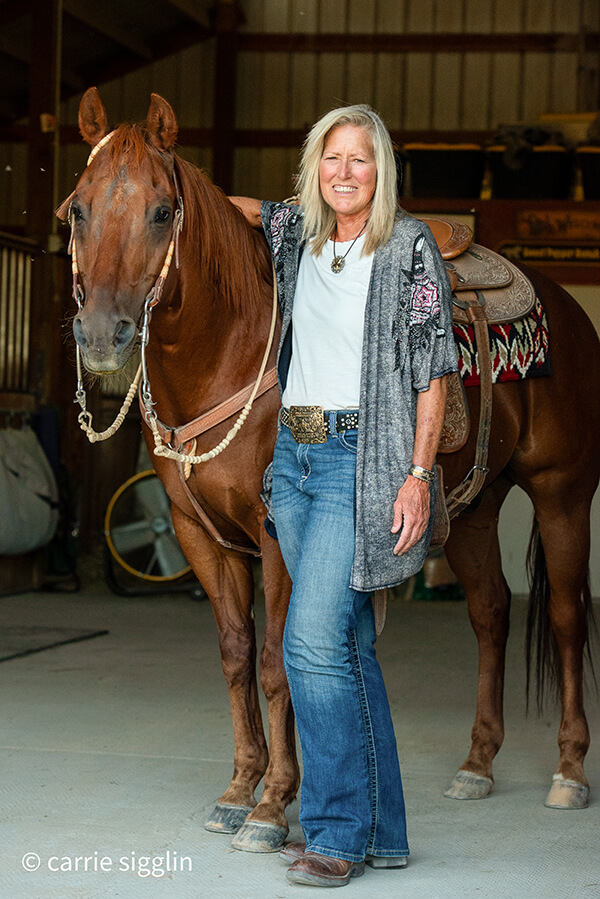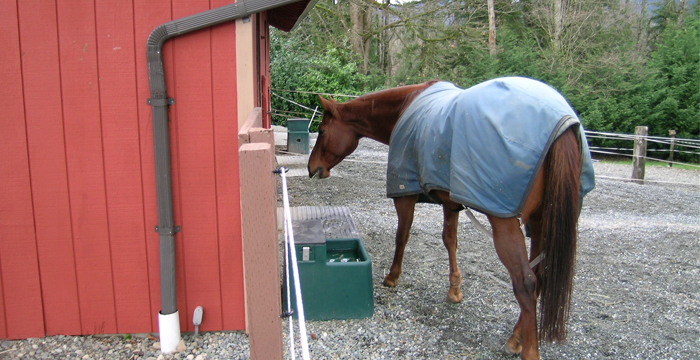Across the Pacific Northwest many horse properties are showing the repercussions of a wet winter followed by spring precipitation. Muddy paddocks with miserable horses standing up to their ankles in filth aren’t fun for horses or their owners.
Mud creates an unhealthy environment for a horse. It harbors bacterial and fungal organisms that cause diseases such as abscesses, scratches, rain scald, and thrush. Mud is also a breeding ground for insects, especially mosquitoes and filth flies. Horses fed on muddy ground can ingest dirt or sand particles leading to sand colic, a very serious digestive disorder. Mud also creates slick, unsafe footing that can cause slips and injuries (for horses and humans). And, as all of us horse owners know, mud makes chores difficult and life around the barn unpleasant.
Also, mud in the spring becomes dust in the summer. Research shows that exposure to dust is a potential health risk for horses and people.
Mud has serious environmental impacts. Mud carrying runoff of sediments and nutrients from manure can get into streams, ponds, and wetlands. This can be detrimental to fish, shellfish, and aquatic wildlife. You don’t have to live near a creek or lake for this to have a negative impact as nutrients and sediments can also cause problems for ground water, a special concern if you are on a well.
Here’s a list of horse-friendly tips for dealing with mud, manure and dust problems on your horse property:
Create a sacrifice area or paddock. This area should be on higher ground, away from ditches, creeks, or water bodies. Using a sacrifice area keeps horses from destroying pastures and overgrazing – especially in winter. It confines manure and urine to an area where you can easily manage it. Surround this area with a grassy buffer to act as a filter for contaminated runoff. Using footing in this area such as coarse washed sand or crushed rock will help cut down on mud problems in the winter months and will make it easier for you to care for.
Use some type of footing in sacrifice and high traffic areas. This will cut down on mud problems by keeping horses off the dirt and allowing rainwater to percolate through. Popular choices include hogfuel (chipped wood), gravel (crushed rock), or sand. Hogfuel has the added benefit of helping to break down the nitrogen in the horse’s urine and manure. Use 3 to 6 inches of footing throughout your paddock depending on how deep your mud is.
Pick up manure in your paddocks and sacrifice area at least every three days. This practice reduces parasite infestation (some species of worms hatch as frequently as every three days) and it will greatly decrease the buildup of mud. While you’re at it, pick up stray clumps of bedding or leftover hay. All organic material eventually decomposes and leads to mud.
Tarp the manure pile. This keeps your manure pile looking like a pile of compost and not a pile of mush. The nutrients you are trying to save will stay in the compost and will not get washed out into the surface waters where they can cause problems. Store manure as far away as possible from streams, ditches, or wetlands to reduce environmental impacts.
Deal with drainage. If surface water runs into your barn or paddocks, look for ways to divert this water away. Possibilities for dealing with drainage issues include French drain lines, water bars (like a speed bump for water runoff), grassy swales, or dry wells.
Install rain gutters to divert clean rainwater away from high traffic areas. This will reduce the amount of nutrients (from manure and urine) and sediments (from soil) washed off into surface waters. It also has the added benefit of substantially reducing the amount of winter mud created in your sacrifice areas—and it keeps clean rainwater clean.
Cross-fence pastures and rotate horses to prevent overgrazing and soil compaction. At least three inches of green, leafy material is needed for rapid regrowth and for the biofiltration of nutrients, sediments and chemicals. Compaction of the soil makes water infiltration and root growth difficult. Poor pasture management results in reduced quality and quantity of grass, increased soil erosion, nitrogen runoff (from manure and urine) and weeds. It also increases feed costs because of the reduced pasture productivity and potentially increased vet bills if your horse eats toxic weeds.
Plant and maintain native trees and shrubs. Plants use a lot of water and can potentially reduce the amount of standing water on place. A mature Douglas fir can drink 100–250 gallons of water per day, plus evergreens have an added bonus in that they keep using water in the winter when deciduous trees are dormant. Using water-loving native shrubs along the outside of paddocks may help keep the area dryer and reduce runoff. Examples of plants that might be useful include Douglas fir, willow, cottonwood, red osier dogwood, and hybrid cottonwood.
Reducing the amount of mud on your horse property will create a healthier place for your horses, an easier place for you to manage, a prettier picture for you and your neighborhood, and a cleaner environment for all.
Check out the Horses for Clean Water website for the latest online classes, virtual individual consultations, tip sheets and more resources on horse keeping and land management.
View the full May 2020 edition here.

Alayne Blickle began in the 1990’s as a pioneer in water conservation and natural resources conservation by creating the entrepreneurial consulting business, Horses for Clean Water, an award-winning internationally acclaimed education program that looks for horse-healthy, nature-based solutions to land management challenges. She continues this work today partnering with agencies, organizations, and horse owners throughout North America and worldwide. She is a regularly contributing writer and photojournalist to several equine publications.
Alayne lives with her horse trainer husband, Matt Livengood, in southwestern Idaho where they raise and train AQHA horses and mustangs on their eco-friendly horse ranch. Contact her through the Horses for Clean Water website or through their ranch website Sweet Pepper Ranch.
For more information contact Alayne at [email protected] or 206-909-0225.







i need a medication /salve for one mare in particular. I live on the Oregon coast, and while I have dry stalls in a barn cleaned daily. and good drainage ,
(I live on a mountainside) horses WILL find a muddy spot to roll on while they shed, and they have 18 acres to find that special spot
Hi Jane, I would consult your veterinarian, but explain to us what the issue is and perhaps we can recommend something.